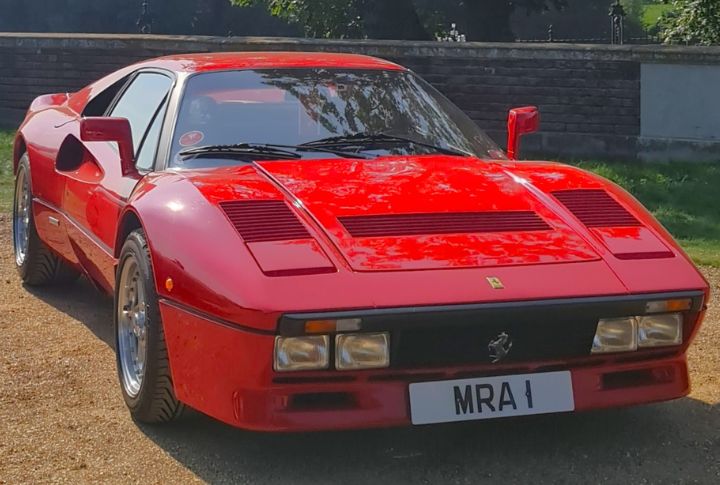
15 Memorable Supercoupes from the 1980s

Remember Miami Vice cruising down Ocean Drive, synth music pumping, and Crockett behind the wheel of a sleek, outrageous machine? That was the era of the 1980s supercoupes. They were about sharp angles, monstrous engines, and head-turning designs. Beyond the flash, these automotive icons were technological marvels, pushing the boundaries of speed and performance. We’re taking a deep dive into the world of 1980s supercoupes, the machines that defined an era of glamor and speed.
Lamborghini Countach

Launched in 1974, The Lamborghini Countach was already a legend by the 1980s. Marcello Gandini designed this supercoupe as a rear mid-engine, rear-wheel-drive with multiple futuristic features, like the scissor doors, which Lamborghini carried over to multiple later models.
Porsche 959

The Porsche 959 was a technological marvel produced from 1986 to 1993. Designed for homologation in Group B racing, it was a street-legal beast with a twin-turbocharged 2.8L flat-six engine that unleashed a mind-blowing 450 hp, with some models reaching a top speed of 211 mph.
Ferrari 288 GTO

Although it resembled its predecessor, the 308 GTB, the 288 GTO featured the new 3.0L twin-turbo V8 engine. It unleashed an unmatched 400 hp, making it one of the fastest Ferraris of its time. The car also incorporated advanced aerodynamics, with a prominent rear wing for superior downforce.
Aston Martin V8 Vantage Zagato

This limited edition Aston Martin V8 Vantage was a collaboration between two automotive legends—Aston Martin’s timeless design and Zagato’s famous craftsmanship. This masterpiece featured a lightweight aluminum body with Zagato’s signature boxy design elements. The engine was a 430 bhp version of the Vantage’s V8 engine, reaching a maximum speed of 186 mph.
Ferrari F40

Built to celebrate Ferrari’s 40th anniversary, this fire-breathing machine embodied the spirit of pure, unadulterated driving. It featured a twin-turbocharged 2.9L V8 that propelled the F40 from 0 to 60 mph in a scorching 4.1 seconds. Unlike some contemporaries, the F40 prioritized lightweight construction and driver engagement over excessive comfort features.
Alfa Romeo SZ

The Alfa Romeo SZ was a wedge-shaped collaboration between Alfa Romeo and the Italian design house Zagato. It shared some mechanical components with the Alfa Romeo Alfetta GT, but the SZ’s looks were extraordinary with its futuristic alien design. The 3.0L V6 engine offered decent performance and carved corners with precision.
Buick GNX

Buick’s GNX was an unexpected player in the supercoupe game. This limited-production version of the Grand National took the muscle car formula and cranked it up. Under the hood, a turbocharged 3.8L V6 engine pumped out a staggering 276 hp and received maneuverability upgrades.
BMW M1

The BMW M1 was specially built to compete in Group 4 racing. It resulted from Lamborghin’s agreement with BMW to produce a racing car, which was a mid-engined masterpiece with a 3.5L I6 engine churning 277 hp. The M1’s wedge-shaped design was a stunner, and its performance was equally impressive.
De Tomaso Pantera

Having debuted in 1971, the De Tomaso Pantera wasn’t strictly an 80s car. It continued to be produced throughout the decade and remained popular for those seeking an exotic Italian driving experience with a mid-mounted Ford 351 Cleveland V8 engine. It offered American muscle in a sleek Italian package.
Vector W8

With only 22 vehicles produced, the W8 was an improvement to Vector Aeromotive Corporation’s earlier W2. The 6.0L V8 engine unleashed a mind-blowing 625 hp, reaching speeds exceeding 200 mph. It featured a gullwing door design, an aircraft-inspired interior, and advanced technologies but never achieved widespread production due to its high cost.
Audi Quattro

The Audi Quattro left an undeniable mark on the automotive world of the 1980s. This rally-bred machine introduced the world to the Quattro all-wheel-drive system, a revolutionary technology that gave Audi a significant edge on slippery surfaces. The 2.1L I5 engine didn’t boast the most impressive hp figures, but its all-wheel-drive grip and surefooted handling made it a force to admire on any road.
Peugeot 205 GTI

Hitting the market in 1984, the Peugeot 205 GTI was a small car that packed a punch. Its 1.9L I4 engine offered up to 120 hp in later models. While not a supercar in the traditional sense, the 205 GTI delivered a supercar-like action in a practical and affordable package.
Ford Sierra Cosworth RS500

The Ford Sierra Cosworth RS500 was another vehicle that brought raw rally car features to the street. It housed a Cosworth-developed 2.0L turbocharged I4 engine offering 224 hp in a limited-run variant. Although the Sierra Cosworth RS500 wasn’t the most refined car, it offered brutal performance and a motorsport pedigree that resonated with driving enthusiasts.
Toyota Supra Turbo

Made in Japan, the Toyota Supra Turbo is the third generation of the famous Toyota Supra. This sleek and aerodynamic coupe had a legendary 3.0L twin-turbocharged inline-6 engine that can produce 200 hp. The Supra Turbo’s affordability, reliability, and immense tuning potential cemented its status as a true legend.
Renault Alpine GTA Turbo

Introduced in 1985, this car was designed to overcome the sluggish sales of the original GTA. It’s a lightweight fiberglass-bodied coupe with a unique mid-engine layout with a 2.0L turbocharged V6 engine producing 197 hp. It allowed the car to accelerate to 60 mph in 6.3 seconds. The Alpine GTA Turbo wasn’t a car for straight-line dominance, but it excelled on winding roads, offering a delightful and engaging driving experience.


